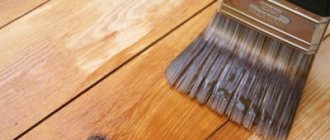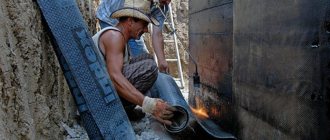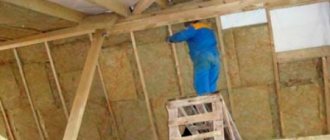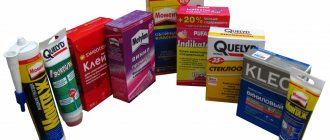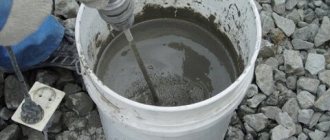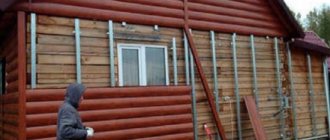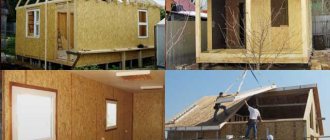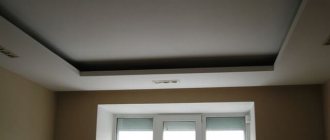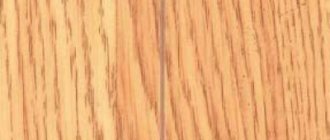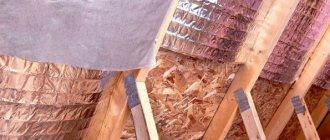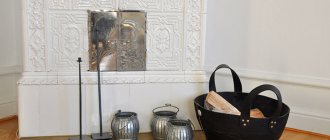Thermal insulation Korund-Classic (20 liters)
Corundum Classic ultra-thin liquid thermal insulation The best universal ultra-thin thermal insulation you have ever worked with. CORUND Classic provides objects with thermal insulation, noise insulation, eliminates the formation of condensation, and is resistant to atmospheric factors. CORUND Classic is highly effective in thermal insulation of internal walls of premises, concrete floors, hot and cold water supply pipelines, steam pipelines, air ducts for air conditioning systems, cooling systems, various containers, tanks, trailers, refrigerators, etc. at operating temperatures from – 60 ° C to + 260 °C. It is used to eliminate condensation on cold water supply pipes and reduce heat loss in accordance with SNiP in heating systems
1 year warranty.
Packaging - plastic hermetically sealed bucket, volume 10 l, 20 l. Ultra-thin thermal insulation Corundum
The undoubted advantages of Corundum thermal insulation are:
Can be applied to metal, plastic, concrete, brick and other building materials, as well as equipment, pipelines and air ducts. They have ideal adhesion to metal, plastic, propylene, which allows you to isolate the surface to be coated from access to water and air. Not permeable to water and not affected by an aqueous salt solution. Coatings provide surface protection from moisture, precipitation and temperature changes. Effectively reduce heat loss and increase anti-corrosion protection. Protects the surface from the formation of condensation. A coating layer 1 mm thick provides the same insulating properties as 50 mm rolled insulation or brickwork 1-1.5 bricks thick. Can be applied to surfaces of any shape. Do not create additional load on supporting structures. Prevents temperature deformation of metal structures. Reflect up to 85% of radiant energy. Provides constant access to inspect the insulated surface without the need to stop production, downtime associated with repairs, and failures in the operation of production equipment. They are not destroyed by exposure to UV radiation. The fast coating procedure reduces labor costs compared to traditional insulators (easily and quickly applied by brush or airless applicator). Easily repaired and restored. They are insulating building materials that do not support combustion. At a temperature of 260°C they become charred, at 800°C they decompose with the release of carbon monoxide and nitrogen oxide, which helps slow down the spread of flame. Environmentally friendly, non-toxic, do not contain harmful volatile organic compounds. Resistant to alkalis. Hydrogen index (pH) 8.5 – 9.5 Time for complete drying of one layer 24 hours Estimated thermal conductivity at 20°C 0.001 W/m °C Fully certified in Russia.
Ultra-thin thermal insulation Corundum CLASSIC
INSTRUCTIONS for applying ultra-thin thermal insulation CORUND
**********************DO NOT ALLOW FREEZING!****************************
CORUND fits well on all types of surfaces: metals, wood, plastic, glass, concrete, brick, etc. Insulation work can be carried out on surfaces with temperatures from +7 ºС to +150 ºС.
1. Surface preparation. a) The surface to be insulated must be cleaned of dirt, rust, dust, old paint, crumbling elements must be removed, etc. Pay special attention to ensure that there is no “loose” rust on the metal in the form of a “fungus”, which, after applying CORUND, will peel off from the metal along with the coating. Clean the metal surface from rust using metal brushes or abrasive wheels, removing the loose layer of rust until a metallic sheen appears. The rust-free surface is treated with a rust converter and, if necessary, kept for 2 hours. New metal surfaces may require preservatives to be removed. The finished surface should not contain crumbling elements, should be dry (including not condensing), should not contain oily or greasy elements, and should not be overly plastic.
b) If CORUND is intended to be used on ferrous metal surfaces, with operating temperatures up to +90 +95 C, then the surface must first be dedusted and degreased, coated with either a modification of CORUND ANTIKOR (preferable), or treated with VL-02 or VL- primer 023 (1-2 layers)
c) If the coating is to be applied to the surface of non-ferrous metal, then it is necessary to treat the surface mechanically to remove the gloss, remove dust, degrease, and treat it with VL-02 or VL-023 primer (1-2 layers).
2. Preparation of the insulating coating. CORUND is ready for use; it must be mixed, if necessary, adding a little water, immediately before application to a previously prepared surface. The amount of water (from 0 to 50%) also depends on the temperature of the application base and subsequent operation. Please contact your nearest representative office for advice. If the storage period is long, separation into fractions is allowed inside the container. The working consistency of the material, as well as the consistency of the first layer of material when applied to a surface at temperatures below +90 C, is regulated by adding distilled water as a diluent in an amount of 5-10% of the volume.
********************DO NOT OVERSTIX!********************
When using a drill, the maximum permissible mixing speed is 150-200 rpm.
Using vertical movements of the blade to immerse the thickened part in the liquid, turn on the drill and slowly begin to rotate the blade, mixing the curds with the liquid. Stir until the product resembles cream. Approximate mixing time: Mixer 3-8 minutes, Manual mixing 7-10 minutes. If the task is to eliminate condensation, “coats” of frost, the material is applied with minimal addition of water, with a maximum gap between layers.
3. Coating.
It is recommended to use a soft brush with long natural bristles. You can apply the coating to small surfaces or areas with complex configurations using a soft brush. Surfaces with an area of 100 m2 or more can be treated using an airless sprayer with an air pressure of no more than 5-7 atm (important! see additional technical card “Mechanical application”). The insulating coating can be applied to surfaces with temperatures ranging from +7ºС to +150ºС. You cannot work in humid weather, because The material is liquefied by water and will not dry out. For better adhesion of the material to the surface being treated, it is recommended to apply a primer layer to the prepared surface with a liquid (like milk) composition of the material diluted with water. The period for complete drying of one layer of coating with a thickness of 0.4-0.5 mm is at least 24 hours. The next layer can be applied only after the previous layer has completely dried - after 24 hours at room temperature. A layer of the order of 0.4 mm -0.5 mm (optical density thickness) is obtained with three “passes” of the sprayer or brush. Applying the material in a thicker layer is unacceptable, since this leads to the formation of a moisture-proof film on its surface, which in turn prevents the complete evaporation of the moisture contained in it, which will lead to the annulment of the thermophysical properties and deformation of the coating.
When applying the material to a surface with a temperature above 90ºС, the material boils and “sets” very quickly, so the material must be diluted with water. It is recommended to prime the surface with a 40-50% aqueous solution of the material. The hotter the application surface, the more the material is diluted. The diluted material is applied with quick short movements; with this application the layer will be very thin. The drying time for each layer is at least 1 hour.
Such layers are applied until the applied material stops boiling on the surface.
After this, allow to dry for 20 - 24 hours. The material is then applied less diluted. The working consistency of the material, as well as the consistency of the first layer of material when applied to a surface at temperatures below +90 C, is regulated by adding distilled water as a diluent in an amount of 5-10% of the volume.
The thickness of a layer of 0.4 mm can be determined by a thickness gauge, a material consumption of 0.5 liters per 1 m2, or the thickness of the “optical density” of the material (so that the underlying base does not show through the material). The material consumption is affected by the type of surface and method of application. The total thickness of the coating and the number of layers is determined by thermal engineering calculations or recommendations of certified regional production representatives.
Technical characteristics of liquid ceramic thermal insulation Corundum
Thermal insulation material Corundum has technical characteristics that allow it to be used on structures of various configurations and purposes. With a minimum thickness, this product can provide a good level of insulation. Let's consider the main characteristics of Corundum thermal insulation:
- Thermal conductivity
. In numerical value, this indicator is equal to 0.0012 W/(m*C). This is significantly lower than many traditional thermal insulators such as polystyrene foam or mineral wool. - Moisture resistance
. The material does not allow moisture to pass through and is not destroyed under its influence. Even saline solutions have no effect on Corundum. - Vapor permeability
. Thermal paint does not create an airtight film on surfaces. It allows air exchange to occur, maintaining an optimal microclimate in the room. - Fire resistance
. The material does not support combustion. When the temperature reaches 800 degrees, Corundum begins to decompose, releasing carbon and nitrogen monoxide. And at a temperature of +260 degrees, the thermal insulation becomes charred. According to fire safety standards, the material belongs to classes G1 (non-flammable) and B1 (non-flammable). - Adhesion
. In terms of tear-off force, this indicator may vary depending on the type of surface on which Corundum is applied. So, for concrete this coefficient is 1.28 MPa, for steel - 1.2 MPa, for brick - 2.0 MPa. - Operating temperature range
. Corundum has a fairly large range and ranges from -60 to +260 degrees. - Ultraviolet resistance
. The material does not deteriorate under the influence of sunlight. Therefore, you can use it even without a protective coating. - Biological stability
. Mold, fungi, and rot do not form on surfaces treated with Corundum. Also, the material is not used as food by insects or rodents. - Environmental friendliness
. Liquid ceramic thermal insulation does not emit any toxic compounds into the atmosphere even when heated. You can also work with it without using special personal protective equipment. - Lifetime
. This is a durable coating that does not lose its quality for at least 10 years. It does not crack and does not collapse.
How good is Corundum as a heat insulator?
As practice shows, condensation on the surface and excess humidity really disappear. In addition, there is a very real chance to completely eliminate mold and rotting of walls, for example. However, if you do it in a good way, and not “for show,” then one layer will not be enough - it is better to apply at least three.
With this approach, the temperature in the room should rise by one and a half degrees. It turns out that some more significant, noticeable improvements can only appear when many layers are applied, but this is no longer practical from a purely financial perspective. At significant expense, it is already easier to make a facade from mineral wool.
This concludes the review of the insulation (or rather thermal insulator) “Corundum” and now, probably, it is easier to draw objective conclusions and make a decision to purchase it.
